When it comes to woodworking and boatbuilding, Joe Lanni, a middle-school art teacher in north-central New Jersey, considered himself a “true novice,” defining that as “someone who does not have an expertise in woodworking or any related field nor a woodshop at home filled with all sorts of tools.” As a child, Joe did get a bit of experience helping his father do carpentry projects around the house, and while he had tools in his hands, he didn’t get to use them—he just held them for his father—and he “learned how to get yelled at and learned many words that I am not allowed to write.”
“I have always loved boats,” Joe says. “I’ve really admired wooden boats and dreamed about actually building my own.” Anyone who has built a boat, no matter their experience, knows that it starts with a dream, and as Pete Culler writes, “experience starts when you begin, and not one jot before. Start. Start anything, and the experience comes.” In spite of his lack of tools, a workshop space, woodworking skills, and even his own uncertainty, Joe did just that. He started.
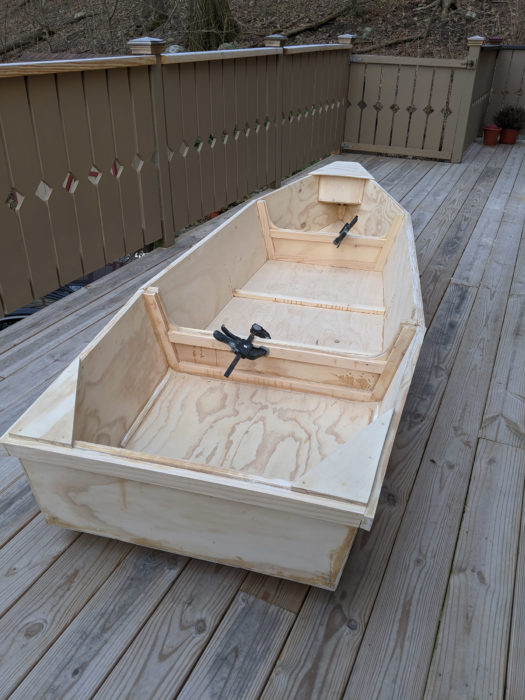 Photographs courtesy of the Lanni family
Photographs courtesy of the Lanni familyWith construction nearly complete, Joe’s Toter 2 is ready for paint. The back porch railing is ready for paint too, and the deck needs stain, but they’ll have to wait.
Joe began his project with a search for plans for a small, easily portable, and stable boat. “I looked at many, many plans. There are thousands out there.” A handful of phrases drew his attention—Easy to Build, Few Tools Required, For the Novice—though the boats making those claims covered such a wide range, from dories, prams, sailboats, and canoes to kayaks, that they didn’t help refine his search. Many of the web pages he browsed claimed their boats were “stable” and “safe,” making him wonder who would advertise their boats as unstable and unsafe.
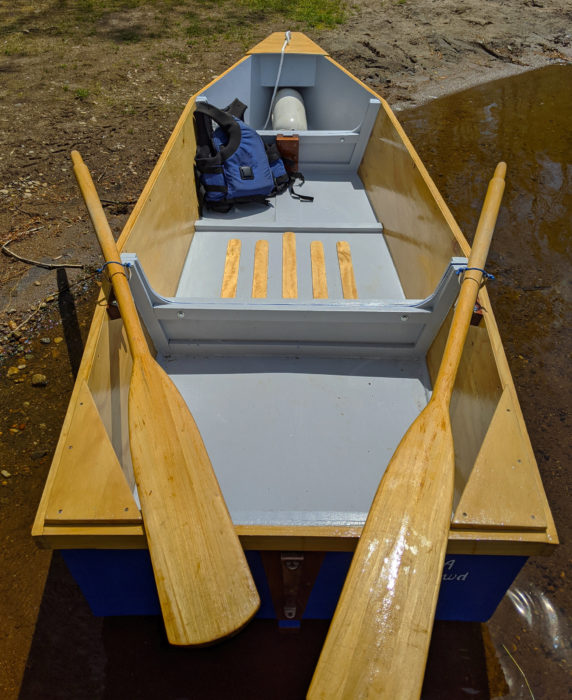
The plans offered plenty of leeway in building the Toter. The sheer and the chines could be straight in each section or curved from stem to stern.
Joe’s internet search led him to Portable Boat Plans of Arizona (PBPA). The 44 boats there are all designed by Ken Simpson, a retired mechanical engineer who once worked on the navigational systems for Apollo spacecraft and later developed micro-switches for computers. He also designed and built a VW-engine-powered amphibious vehicle, a hovercraft, and an airboat. Most PBPA boats are built of plywood, but a few are made of Coroplast corrugated plastic sheet. Several are folding or nesting sectional boats. Some have simple curves, others are composed of straight panels joined at angles.
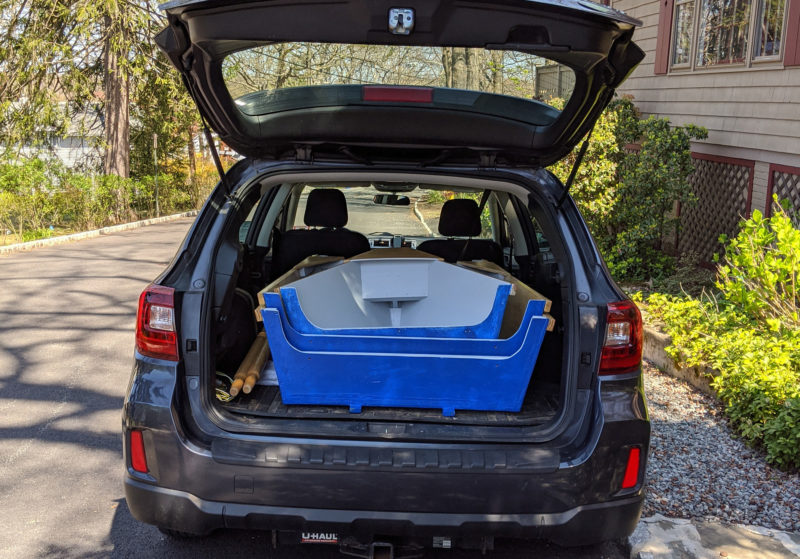
When Joe is traveling light, he can fit the boat in the back of his Subaru Outback.
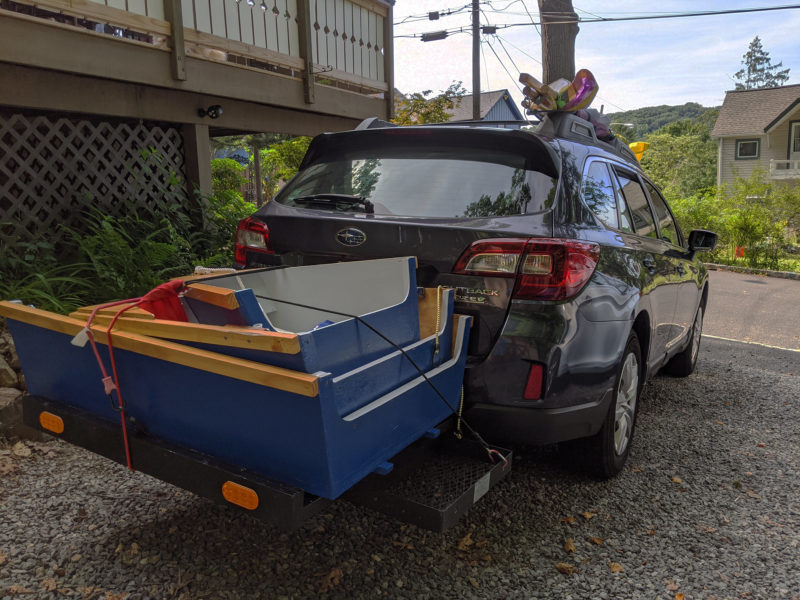
Joe’s other way to carry the sectional is to secure it to a trailer-hitch cargo carrier.
Joe got in touch with Ken, expressed his interest in building a PBPA boat, and received a sample plan in return so he could evaluate the instructions. “There were step-by-step color pictures,” Joe noted. “That sold me immediately. And there were mostly straight cuts required, a big plus.” He ordered the plans for the Toter 2, an 8′ three-piece nesting runabout for trolling motor, oars, and sail.
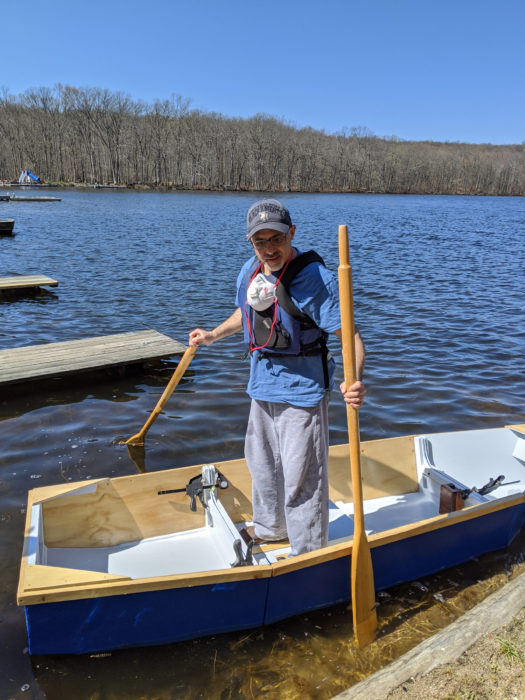
Out for an early sea trial, the Toter’s sections are held together with clamps.
Joe appreciated the relaxed attitude presented in the plans: “One of the most appealing features was the built-in ability to personalize and customize the boat. I don’t know if Ken meant it the way I read it, but to me it meant adjust, ad-lib, and keep going when you make a mistake, which is inevitable if you are a true novice.”
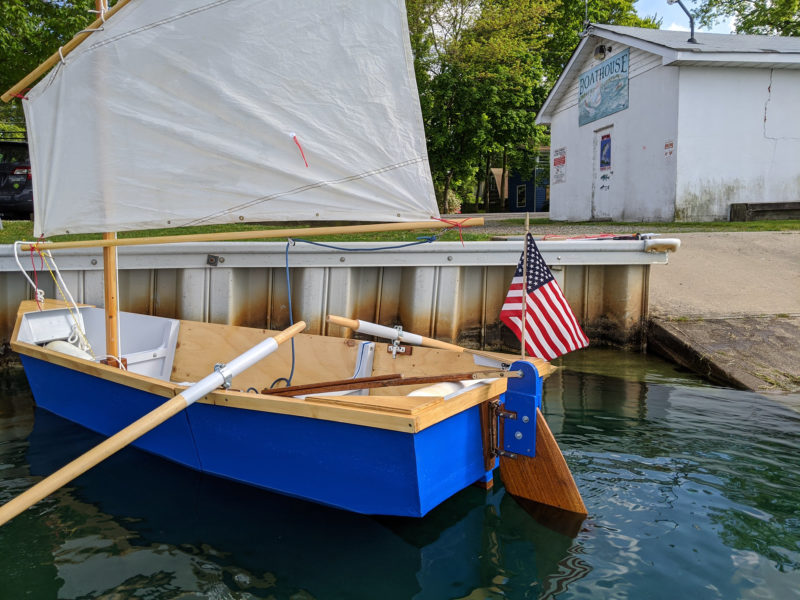
Now equipped with oarlocks, a rudder, and her ensign, 3’S A CROWD is ready for adventure.
Joe bought the plans, 38 pages in PDF format, right around the time that the Covid-19 pandemic hit. He was able to work from home during the pandemic stay-home order, and had extra free time that he could fill with projects. There were some household tasks that needed doing; his wife asked him to “work on the deck,” meaning stain the deck and paint the railing. Ken took a broader interpretation of the request and decided that building a boat on the deck qualified as “working on the deck.”
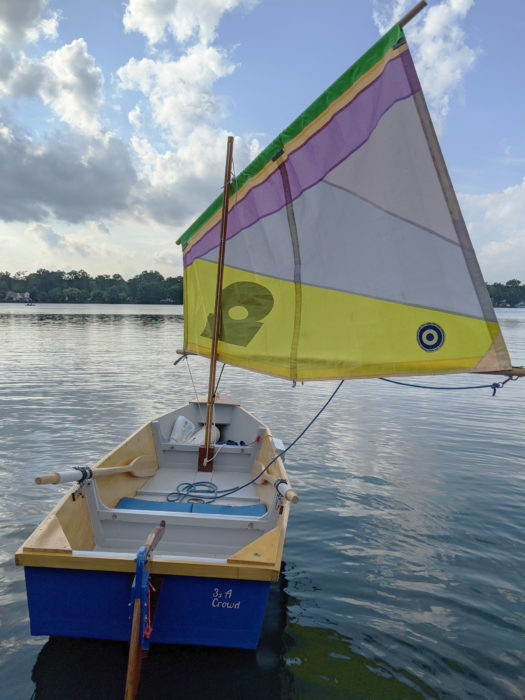
To make his lugsail, Joe cut the top off a jib-headed sail, slipped the yard through the luff sleeve and stretched the leech out, loose-footed, along the boom.
Ken spent two months at home during the first stages of the pandemic’s social distancing and at the end of that period he had a fully functional boat ready to launch on the lake not far from his house. Taken apart and nested for transport, it had a footprint just 37″ square, small enough to fit in the back of his Subaru Outback wagon. He christened the boat 3’S A CROWD, which serves as a name as well as a capacity rating.
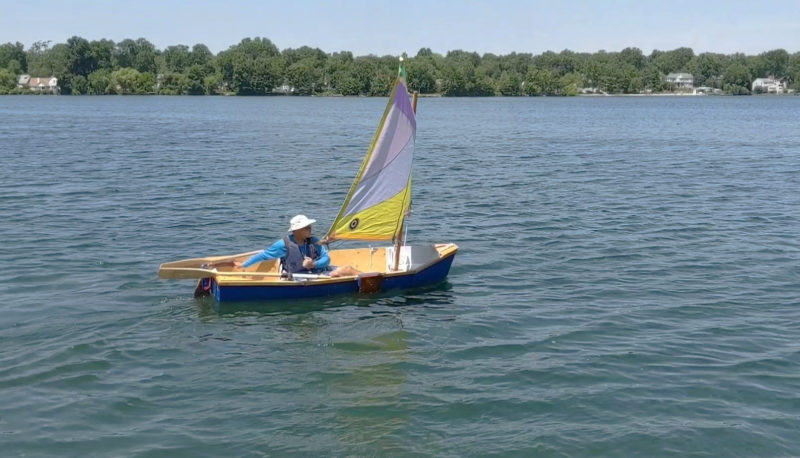
With a leeboard slipped over the gunwale, 3’S A CROWD is ready for windward sailing
While Joe is justifiably pleased with his accomplishment, there is a downside to his success. Now that his boat is finished, he’ll have to give up his status as a true novice. And he’ll have to revisit his obligation to “work on the deck.”![]()
Do you have a boat with an interesting story? Please email us. We’d like to hear about it and share it with other Small Boats Magazine readers.
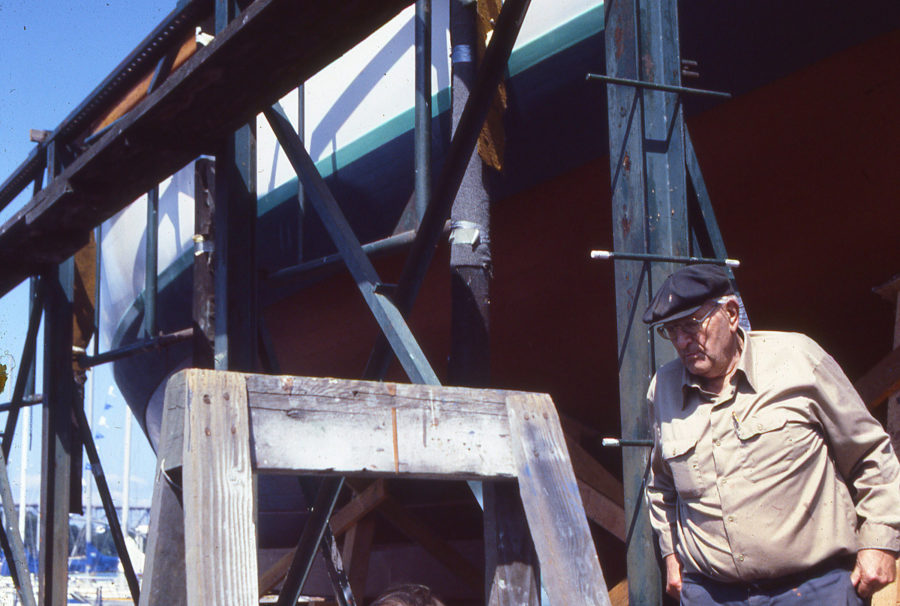
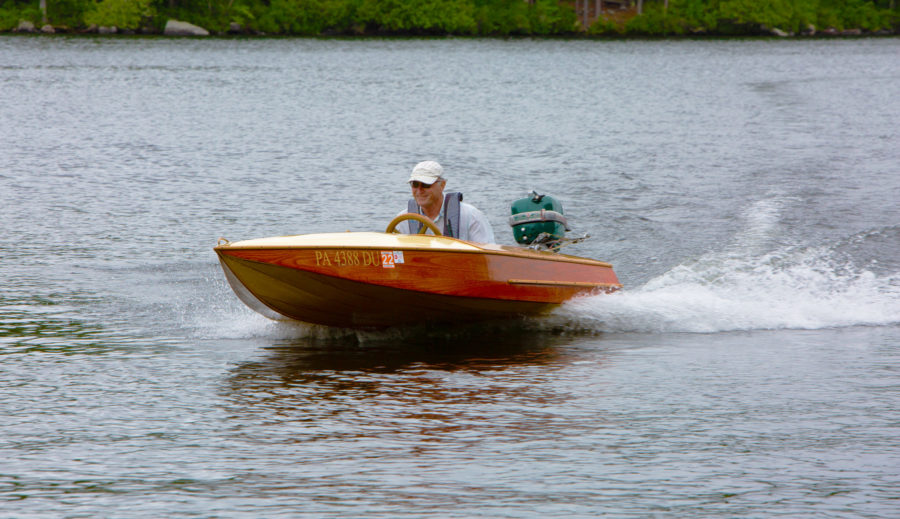
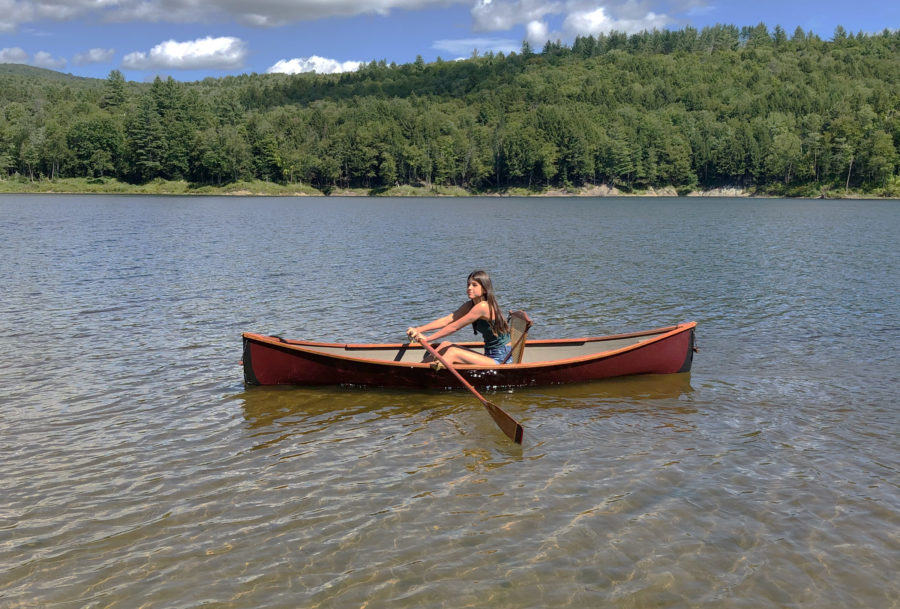
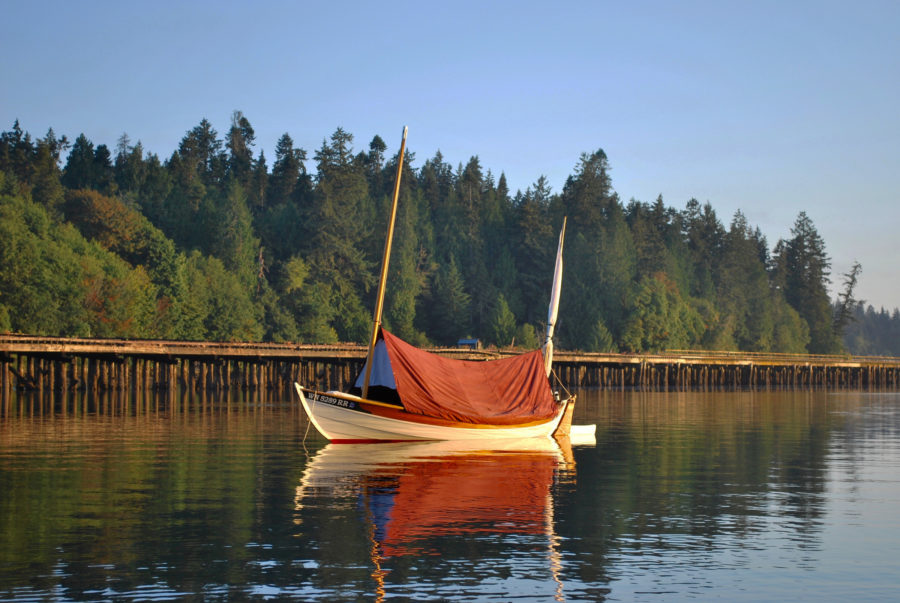
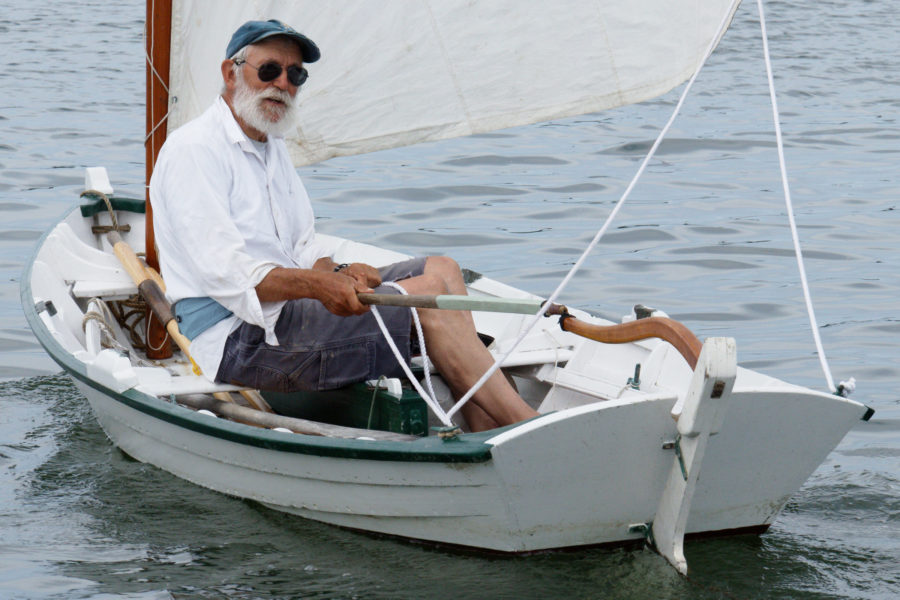
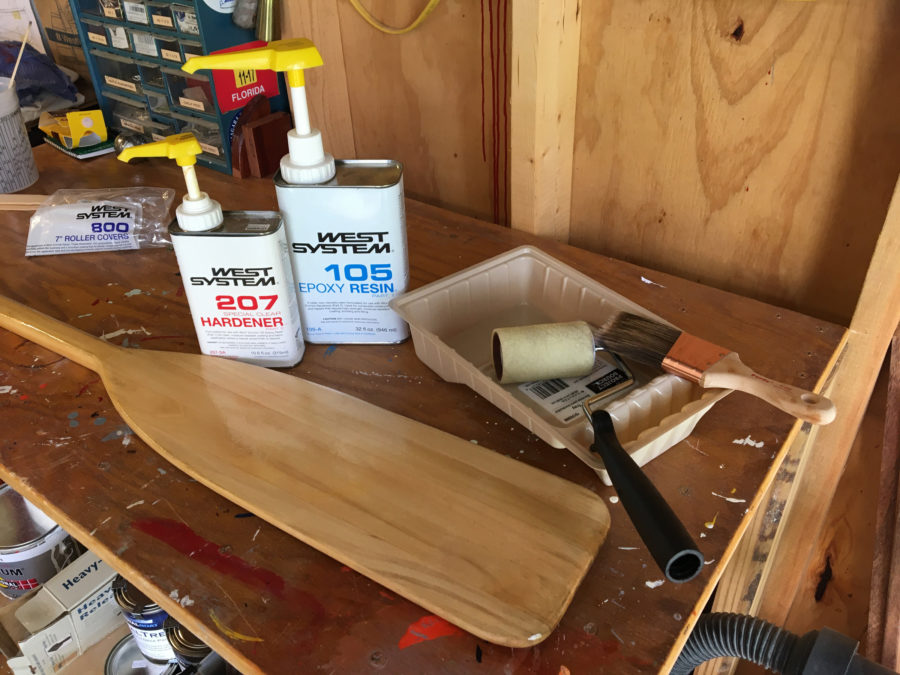
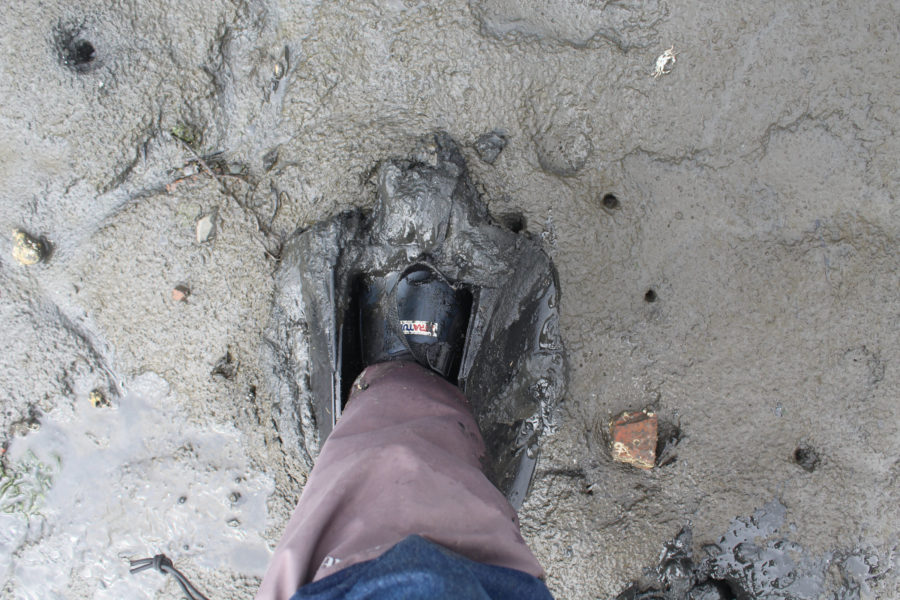
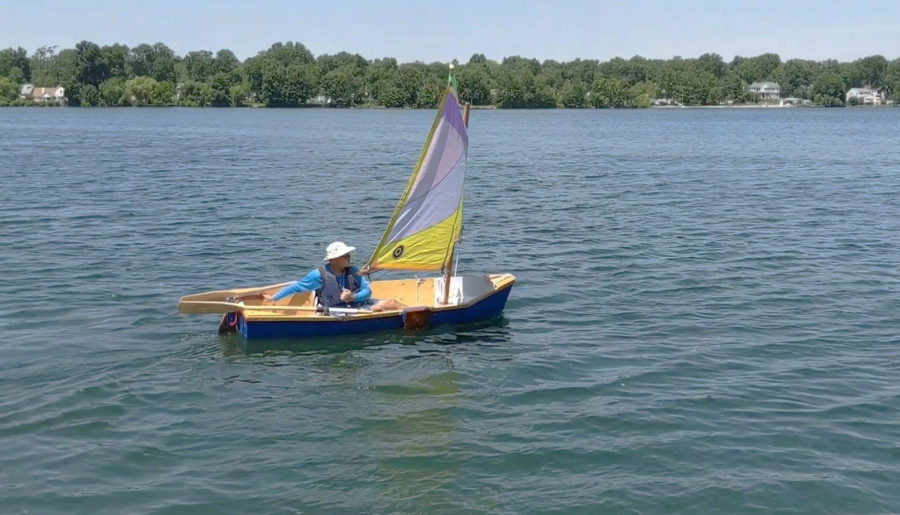
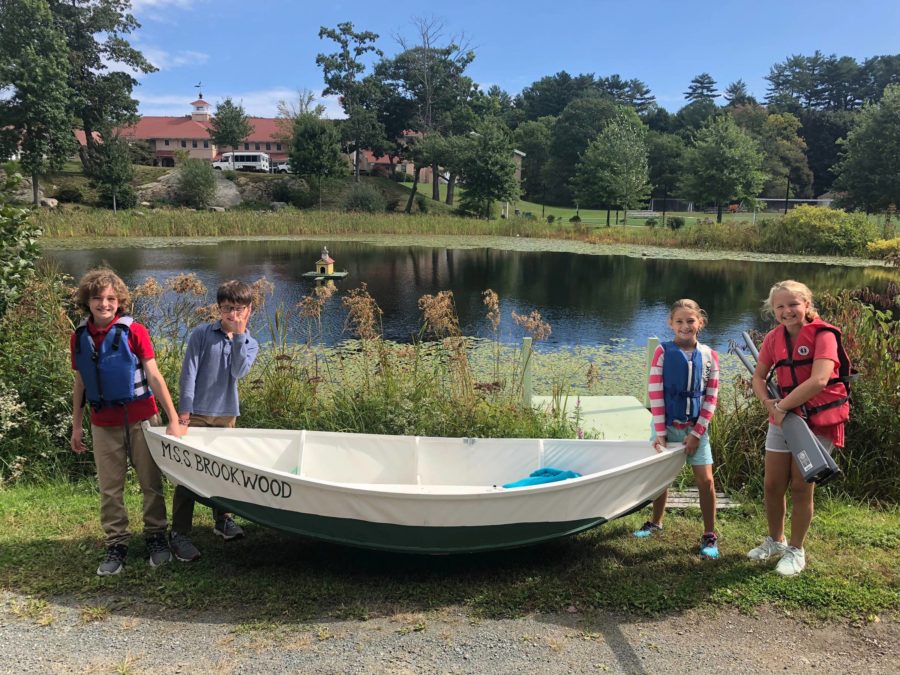
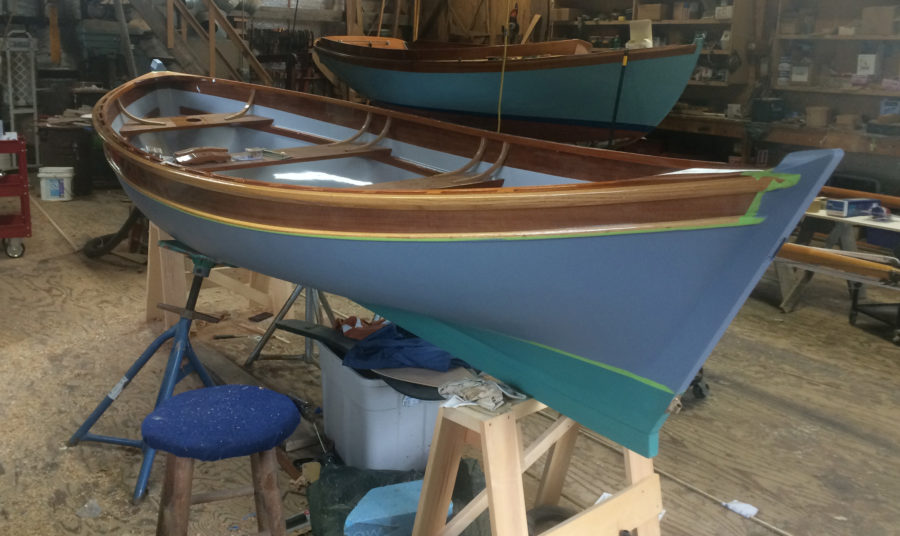
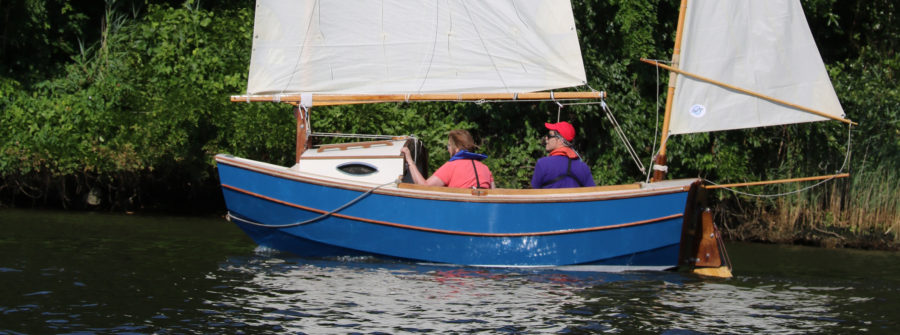
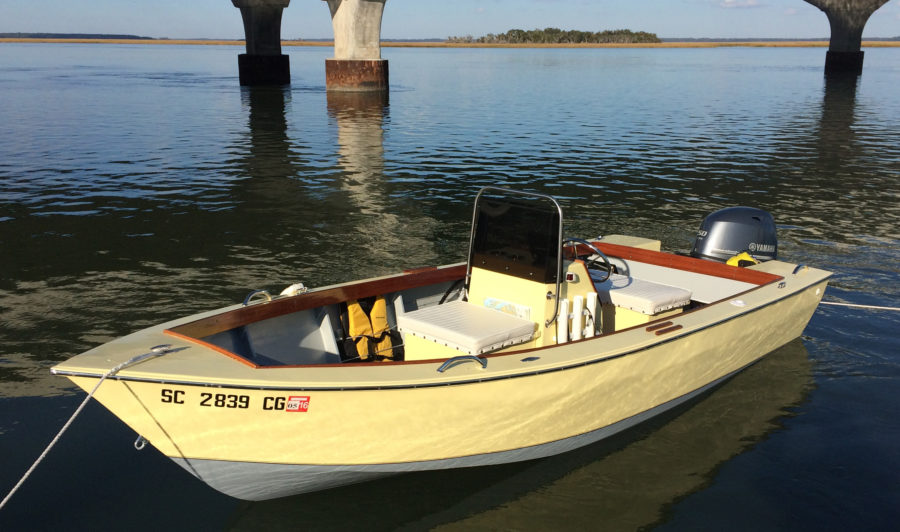
What a fun boat and story! I see one in my future.
Well done, Joe
Couldn’t the sheer be more gracefully curved, I’m wondering.
How much does each section weigh? Is it loaded into the Outback one section at a time? I really like the compactness of it!
Thank you,
Ric Olsen
Nice! I’ve looked at the website. I’m just wondering how well does it row?